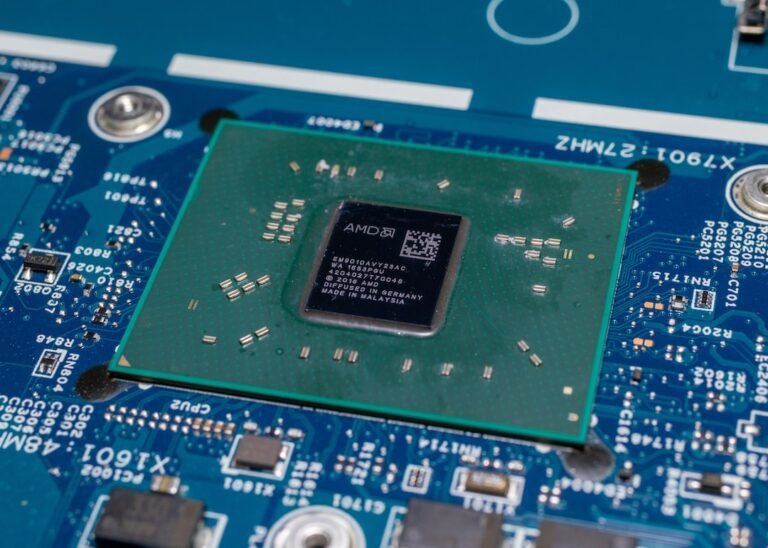Introduction
Imagine being able to receive high-quality medical care from the comfort of your own home. No more long commutes, waiting rooms, or dealing with the stress of being in a hospital. Thanks to the advancements in telemedicine, this is becoming a reality for many people. And one crucial element driving this revolution is the emergence of 5G routers.
In this article, we will explore how 5G routers are revolutionizing telemedicine, enabling healthcare professionals to provide remote care to patients and improving access to healthcare services. We’ll delve into the benefits of 5G technology, its impact on telemedicine, and how these routers are transforming the healthcare landscape. So let’s dive in!
The Power of 5G: A Game-Changer for Telemedicine
With the advent of 5G technology, the world of telemedicine has received a significant boost. Unlike its predecessor, 4G, 5G offers lightning-fast speeds, low latency, and enhanced network capacity. It’s like a superhighway for data transmission, allowing healthcare providers to deliver real-time care to patients in remote locations.
Imagine a patient living in a rural area, far away from medical facilities. With a 5G router, doctors can remotely monitor their vital signs, conduct video consultations, and even perform complex procedures using robotic surgical systems. The possibilities are endless, and the potential to save lives is immense.
5G routers provide a reliable and stable internet connection, ensuring uninterrupted communication between patients and healthcare providers. The low latency allows for real-time transmission of data, leading to smooth and seamless interaction, just as if the patient and doctor were in the same room.
Enhancing Access to Healthcare Services
One of the greatest challenges in healthcare is providing access to quality care for individuals in underserved areas. Rural communities, remote islands, and even certain urban areas often lack the necessary infrastructure to support advanced medical services.
However, with the deployment of 5G routers, these barriers are being broken down. Telemedicine, powered by 5G technology, enables patients to access healthcare services without the need for physical proximity to medical facilities. Remote consultations, diagnosis, and even monitoring of chronic conditions can now be done from the comfort of the patient’s home.
For individuals with mobility issues, transportation challenges, or limited access to transportation, this technology is a game-changer. They no longer have to navigate through traffic, endure long waits, or travel long distances to receive care. Instead, they can connect with doctors and specialists virtually, saving time, money, and energy.
Streamlining Emergency Care
During emergencies, every second counts. The ability to quickly connect with healthcare professionals and receive life-saving advice can make a significant difference. With 5G routers, emergency medical services can be streamlined, enhancing response times and improving outcomes.
Paramedics can transmit real-time data to the hospital while en route, allowing doctors to prepare for the patient’s arrival. This seamless transfer of information ensures that the necessary resources are available as soon as the patient arrives, potentially saving critical minutes that can be life-changing.
Moreover, in situations where immediate intervention is required, remote expertise can be accessed through 5G-powered telemedicine. Specialists can guide on-site medical professionals through complex procedures, providing real-time advice and support. This level of collaboration and real-time decision-making can be a game-changer in emergency situations.
Data Security and Privacy Concerns
While the benefits of telemedicine and 5G routers are undeniable, it’s crucial to address the security and privacy concerns associated with these advancements. As patient data is transmitted over wireless networks, ensuring the protection of sensitive information becomes paramount.
However, 5G technology brings new opportunities for enhancing security protocols. With improved encryption algorithms and advanced authentication techniques, the risk of data breaches can be mitigated. Additionally, healthcare organizations must adhere to strict data protection regulations to ensure patient privacy remains intact.
By employing robust security measures, such as secure authentication protocols and end-to-end encryption, healthcare providers can ensure the confidentiality and integrity of patient data. This allows patients to feel confident and safe when using telemedicine services, further enhancing their trust in the technology.
Conclusion
5G routers are revolutionizing the way we approach healthcare, bringing about a new era of telemedicine. With lightning-fast speeds, low latency, and enhanced network capacity, these routers are enabling doctors to provide real-time care to patients in remote locations. Access to healthcare services is being greatly improved, as individuals can now connect with medical professionals without the need for physical proximity.
Additionally, the deployment of 5G routers is streamlining emergency care, allowing for quick and efficient communication between paramedics and hospitals. This enhanced connectivity is saving lives and improving outcomes in critical situations. However, it’s important to address security concerns to ensure patient data remains protected.
As the world continues to embrace the potential of 5G technology, we can expect even greater advancements in telemedicine. The future of healthcare is becoming more patient-centric, convenient, and accessible than ever before, thanks to the power of 5G routers.
FAQ
Q: How can I set up a 5G router for telemedicine?
A: Setting up a 5G router for telemedicine is a straightforward process. First, you’ll need to choose a 5G router that is compatible with your network provider. Then, follow the manufacturer’s instructions to connect the router to your internet source and power it on. Lastly, configure the router’s settings according to your network requirements. If you need assistance, you can refer to the home network setup guide for detailed instructions.
Q: What should I do if I encounter issues with my 5G router?
A: If you experience any issues with your 5G router, troubleshooting can help identify and resolve the problem. Start by checking the router’s connections and ensure that it has a stable internet connection. If the issue persists, refer to the router troubleshooting guide for step-by-step troubleshooting tips and solutions.
Q: Are there alternative options for high-speed internet connectivity for telemedicine?
A: While 5G routers offer high-speed internet connectivity, alternative options include fiber internet routers and mesh Wi-Fi systems. These technologies provide reliable and fast connections, making them suitable for telemedicine applications. To learn more about fiber internet routers and other options, check out our guide on 5G routers for high-speed internet connectivity.
Further Reading
| Website | Description |
|---|---|
| Advancement of Telemedicine with 5G | Learn more about the impact of 5G on telemedicine and its potential for revolutionizing healthcare. |
| Unlocking the Potential of Telemedicine with 5G | Explore how 5G technology is transforming telemedicine and improving access to healthcare services. |




